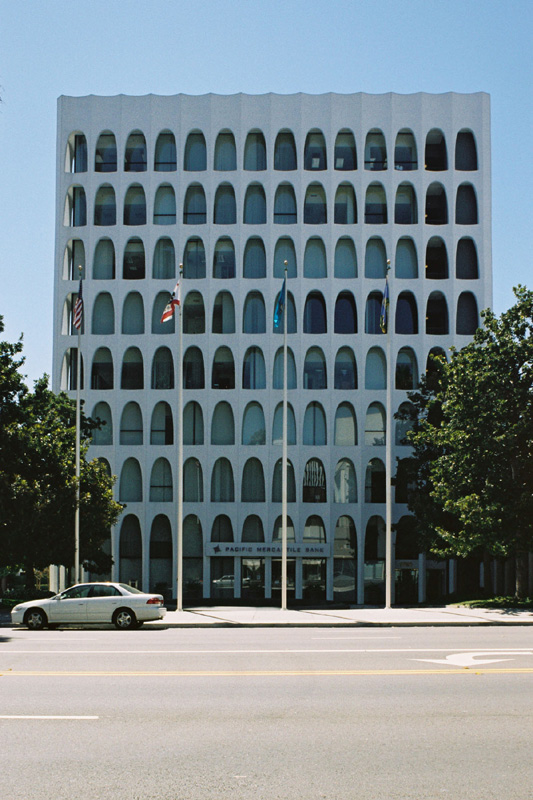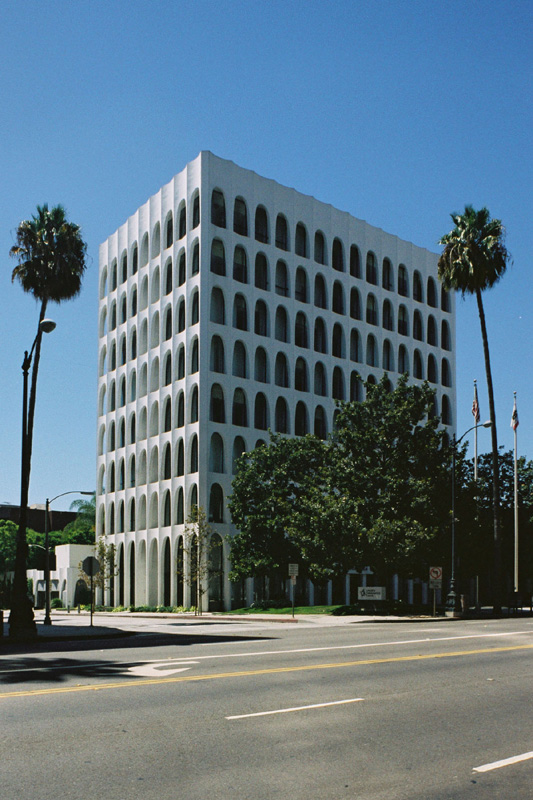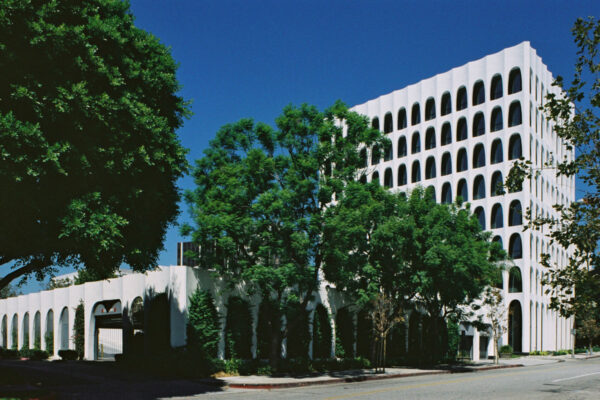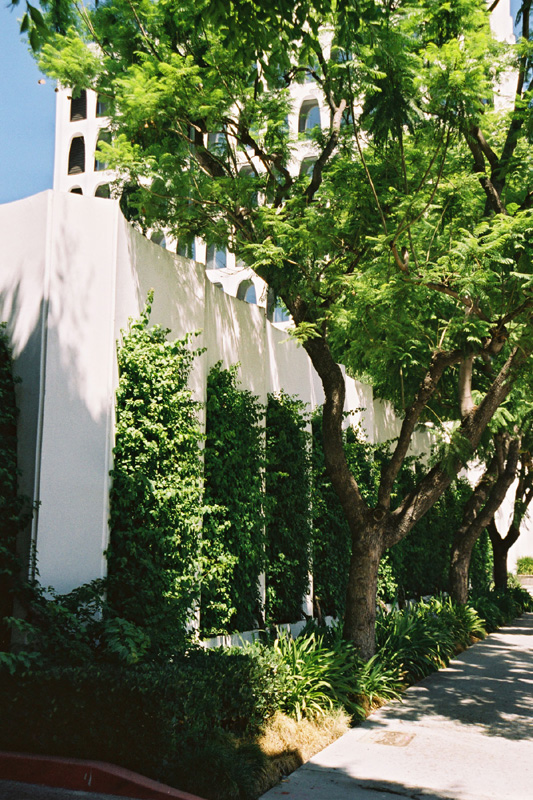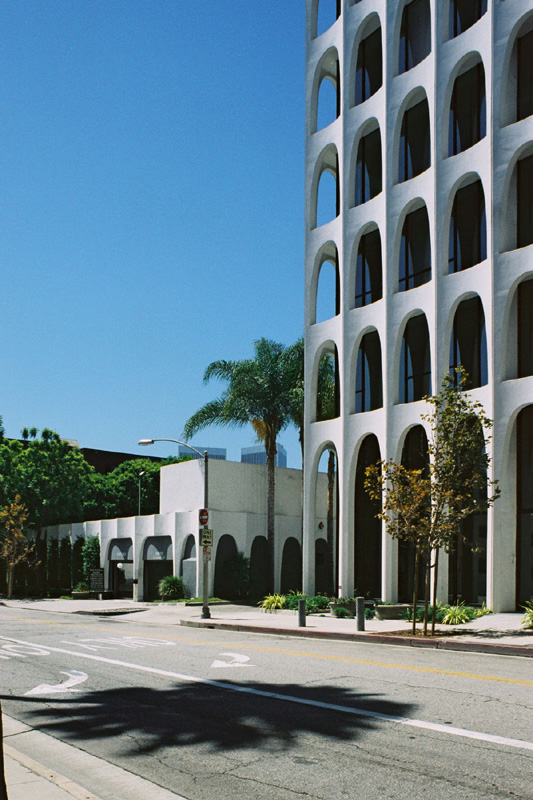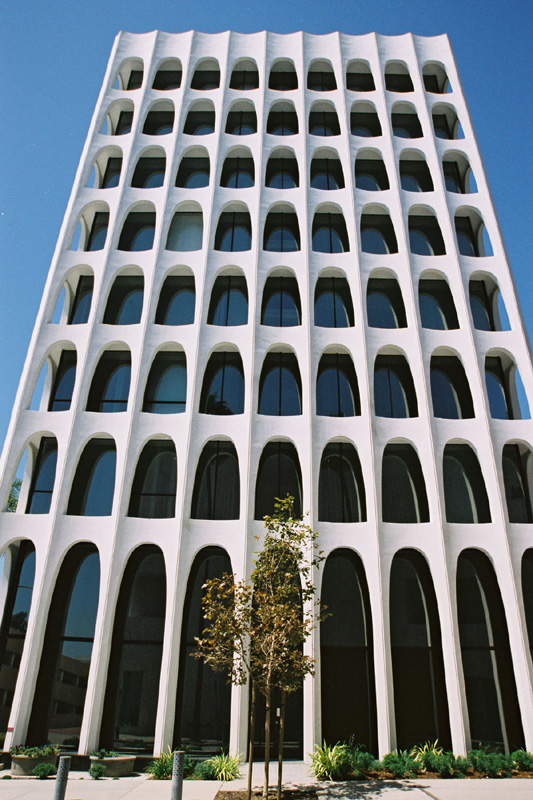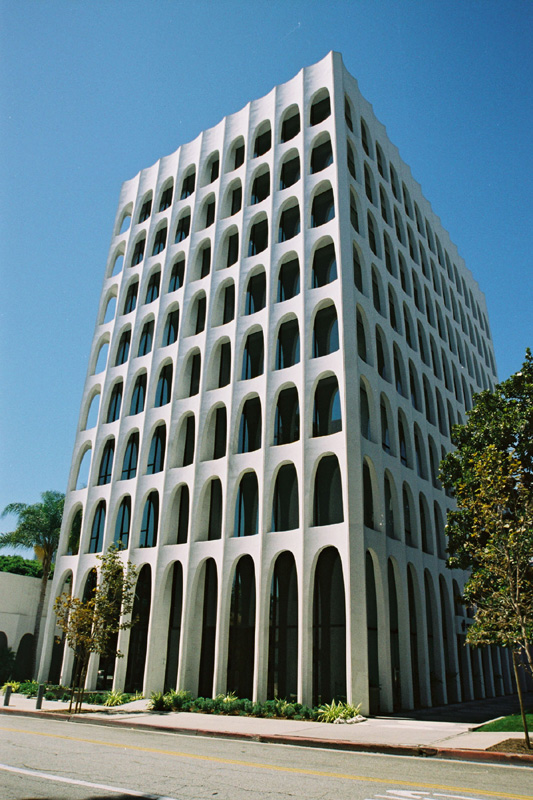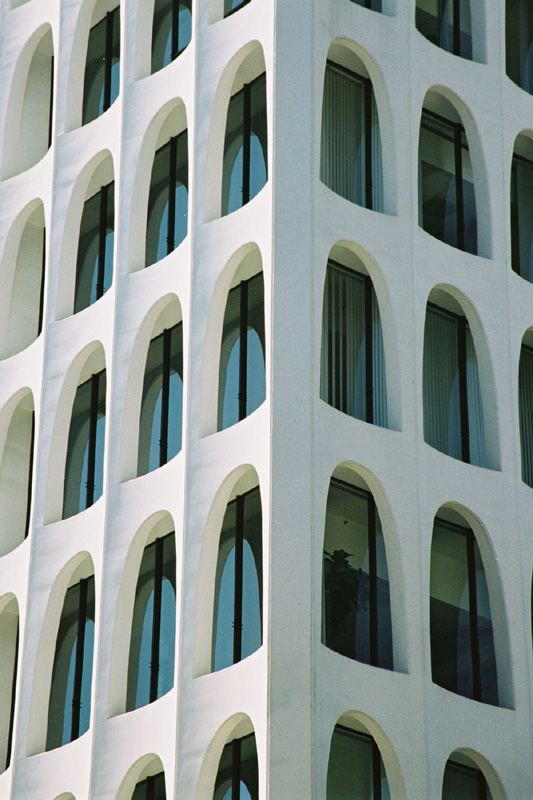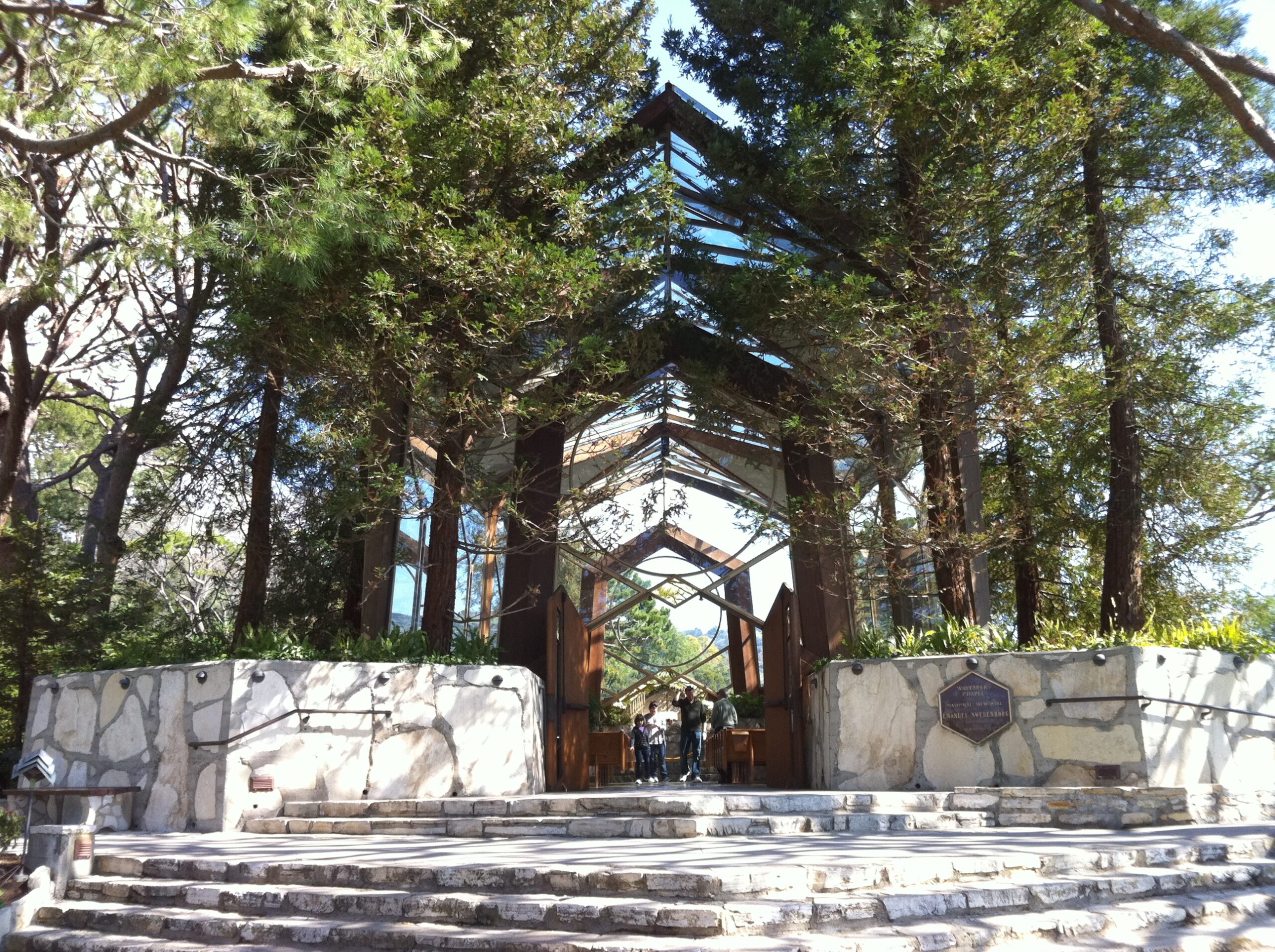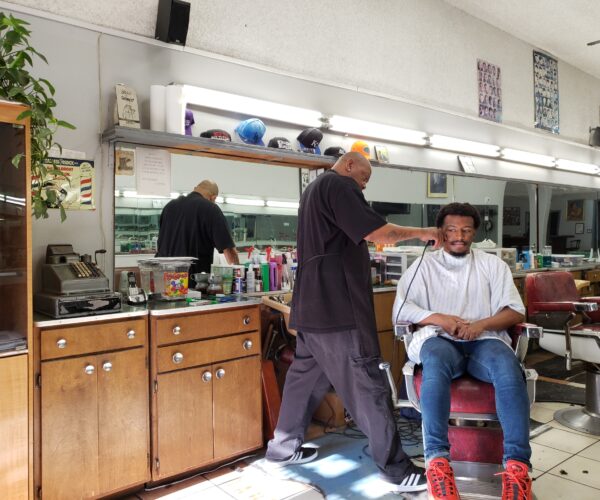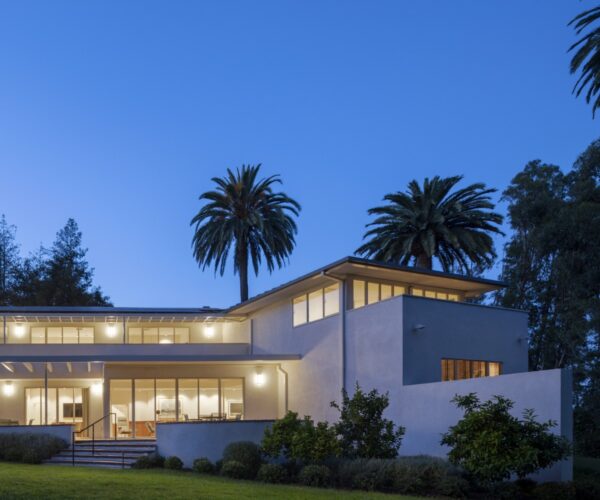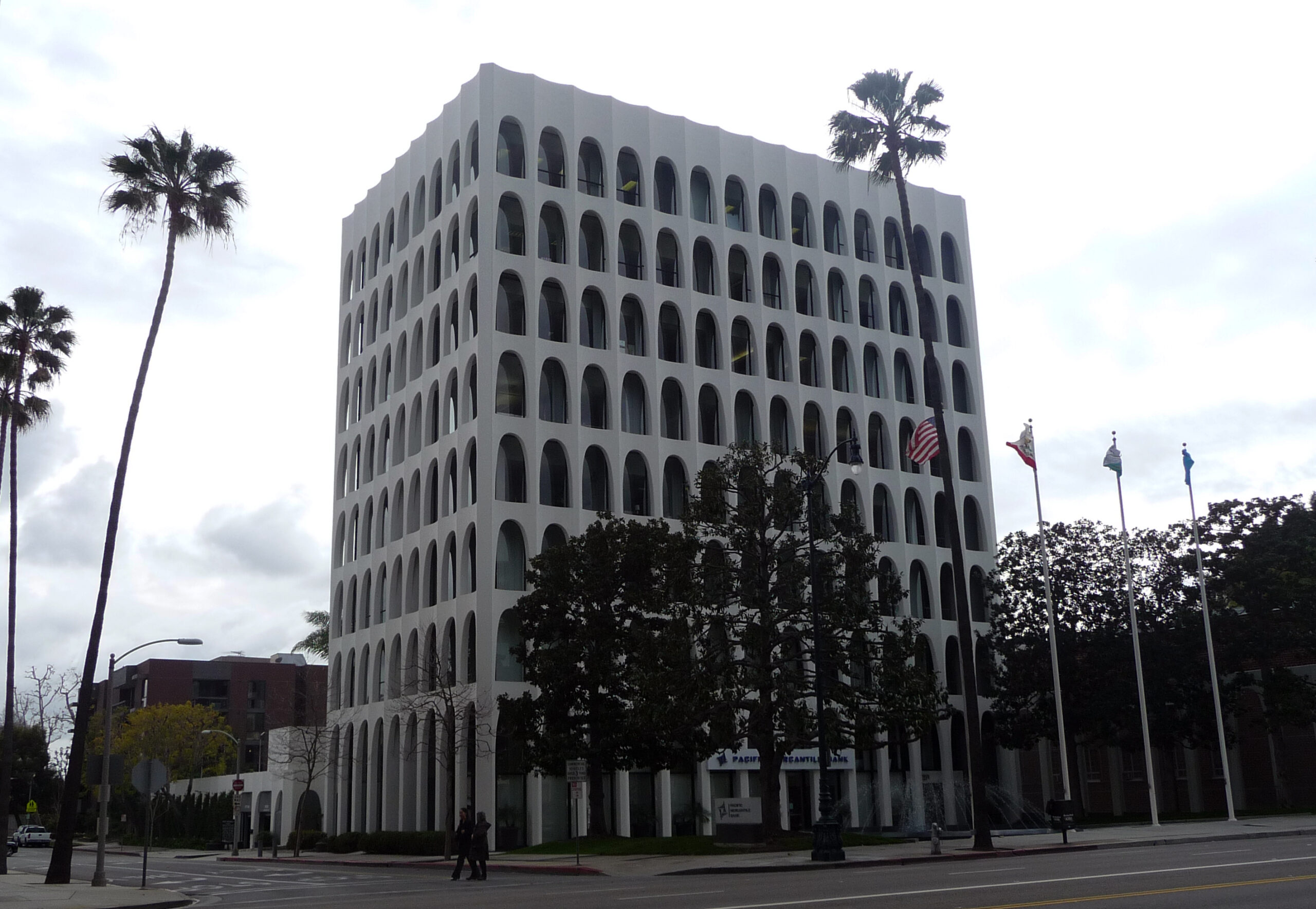
Place
Home Federal Savings/Pacific Mercantile Bank Building
A striking tower of stacked white arches with trailing greenery representing an important step in Edward Durell Stone's re-visioning of historical Classical, Moorish, and Indo-Islamic styles through a Modern lens.


Place Details
Address
Get directions
Architect
Year
Style
Community
The Perpetual Savings and Loan building is a striking tower of stacked white arches with trailing greenery, sited prominently along Wilshire Boulevard in Beverly Hills. It was designed by seminal architect Edward Durell Stone in the New Formalist style he popularized in the early 1960s, and represents an important step in his re-visioning of historical Classical, Moorish, and Indo-Islamic styles through a Modern lens.
Completed in 1962, the eight-story Perpetual Savings building is a simple glass-skinned high-rise completely sheathed in a pierced concrete screen of repeating parabolic arches. It has been described as Venetian Modern, and indeed it stands like a simplified palazzo, complete with front plaza containing four flagpoles and a dramatic circular fountain. Some people see another Italian influence: the Mussolini-commissioned Palazzo della Civilta Italiana in Rome, known as the "Square Colosseum" for its Fascist replication of the ancient arena's arches on a square tower.
Stone was indeed enamored of both classical and modern Italian architecture at the time, visiting the country often with his Italian-born wife; he produced his most obviously Venetian-influenced design, the controversial Gallery of Modern Art on Columbus Circle in Manhattan, in 1964. Whatever its origins, the Perpetual Savings building is a vision in concrete and a lovely work by one of the most influential architects of his time.
